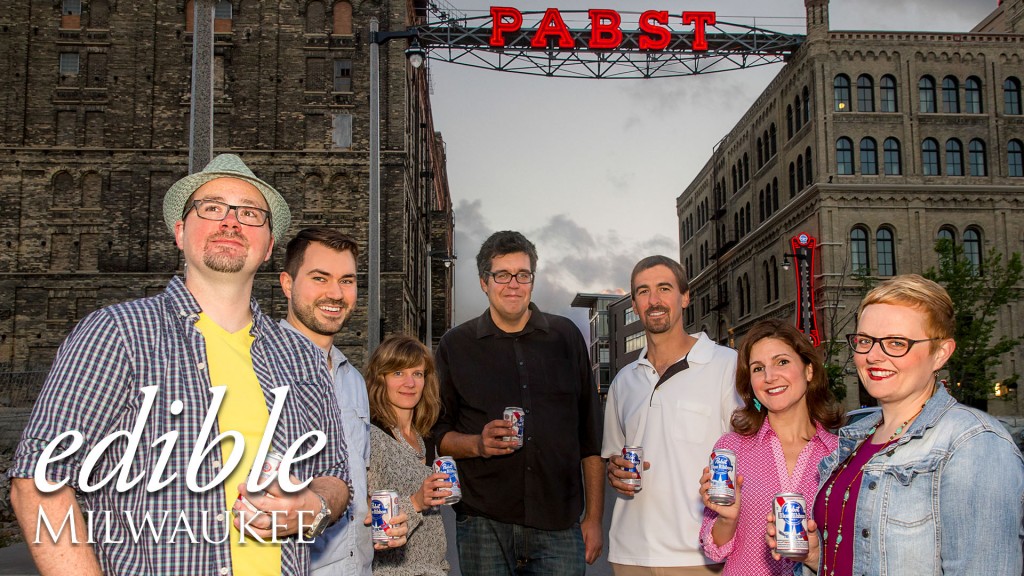Pabst Returns to Milwaukee
Did it Ever Really Leave?
The Pabst Brewery had a presence in Milwaukee for 152 years, and now we hear it’s coming home. The brand’s meaning in culture has gone through numerous and dramatic transformations throughout its 171-year history. Each successive owner of the company left a hefty imprint on the company, and now I wonder: which Pabst is coming home?
The Pabst brand’s series of dramatic transformations can be traced all the way back to the mid-19th century. Captain Frederick Pabst, a real boat captain (having earned the title in his early twenties on a Great Lakes Steamer), married a young woman named Maria Best and settled in Milwaukee. Shortly afterward, Pabst bought half of his father-in-law’s business. With this purchase, he became co-owner of Best Brewery, maintaining an ownership position through Jacob Best’s retirement and the death of his partner, Emil Schandein in 1888. A year later, the name of the brewery officially changed to that of its new owner.
The legacy of the Best Brewing Company in Milwaukee is largely adumbrated by the long shadow of Captain Pabst. Maria’s husband became one of the great Milwaukee beer barons. As co-owner, and later full owner of the family business, he worked assiduously to advance the brand, now known as Pabst, and expand its market. To that end, he started beer gardens in and outside Wisconsin. The gardens were carefully curated mini-environments, to showcase Pabst beer. Milwaukee’s own Pabst Place beer garden must have seemed like a carnival, with a fun house and 15,000-foot roller coaster. His work, and the expense of constructing, supplying and staffing the beer gardens bore fruit. In the first ten years of his ownership, he turned a regional brewery into the second-largest in the nation. In 1893, Pabst Brewing Company was the first brewery to sell a million barrels in a year.
Over time, demand for the brand necessitated manufacturing facilities from coast to coast. The company continued to grow even after Pabst’s death. Heavy advertising, including flashy print ads photographed by Richard Avedon, and commercials with Patrick Swayze and Jason Alexander, communicated the brand’s message through the decades. By the 1980s, the company’s profitability and debt-free balance sheet proved too attractive to escape the attention of corporate raiders like Paul Kalmanovitz.
Kalmanovitz bought his first brewery in 1958, but nobody would look at his record and conclude that he loved beer—or the people who made beer happen. He was better known for his specialty: leveraged buyouts. This is a classy way of saying he bought companies, stripped their profits, sold them for parts and closed factories. His work with Pabst was no exception. If it seems unthinkable that any Pabst board member would have voted for the inevitable outcome, just remember what made Pabst so attractive in the first place: all that cash. Kalmanovitz was not the first businessman to attempt a hostile takeover of the brewery. Pabst had been fending off attempted takeovers for years, and all that legal action doesn’t come for free. So Pabst became the property of Kalmanovitz’s holding company, S&P Co.
The new owner died just two years later, but S&P Co. did not deviate from the plan they would ultimately execute again and again. The Pabst Brewing Company was finally and fully shut down in Milwaukee in 1996, and the company became a “virtual brewer,” contracting the actual brewing to be done by other breweries. As you can imagine, the abrupt shutdown damaged the brand’s reputation in this city.
These were unhappy times, but they would not last forever. A different sort of businessman bought Pabst in 2010. Dean Metropolous is called “the turnaround artist” for his ability to take a struggling brand and stabilize it, then sell for a healthy profit. He has used his skill to turn around brands like Ghiradelli, Vlasic and perhaps most famously, Twinkie. His own methods had historically involved new packaging and flashier ads. However, this time was different. Metropolous sought out and acted on the advice of his two sons, who brought Pabst marketing to the digital masses, eschewing the big-budget flashiness generally associated with Big Beer.
Give credit to the Metropolous sons, then, for connecting the brand with millennials, particularly the subset known as “hipsters.” Like their Gen X forebears, the millennial demographic is deeply suspicious of adman authority. Pabst boomeranged back into relevance because they did not target the group that embraced it. Through no special effort of their own, Pabst started getting love from millennials. At the time, the hand-me-down wisdom of beer advertising campaigns meant Pabst should rush in and exploit the consumers who had, miraculously, plucked the brand from incipient obscurity.
If the Metropolous-era Pabst Brewing Company had followed the traditional model, I doubt we would be welcoming Pabst back to Milwaukee. They soft-pedaled their approach and generally avoided looking phony, which would have alienated their tiny fan base. Whether accomplished by accident or design, the relative media silence of the Pabst Brewing Company is one of the things indie beer drinkers cherish about PBR.
But in the end, the Metropolous family did what they do: they took an established brand in danger of failing, reinvigorated it and put it up for sale.
“Pabst is being sold to the Russians,” we heard, “…or maybe the Chinese.”
Internet rumors aside, it was sold to Blue Ribbon Intermediate Holdings, LLC. The holding company is made up of Eugene Kashper and his partner, private equity firm TSG Consumer Partners. Long before he became Pabst’s new CEO in 2014, Eugene Kashper started his career in beer. He started at Stroh’s two years before they got the contract to brew Pabst, in the Kalmanowitz era. Part of his first beer job was selling Pabst. He’s been in the brewingdistribution sphere ever since. Unlike Pabst’s two previous owners, Kashper actually seems to want to be in the beer business. His plans for Pabst include a return to its hometown. Next year, we can expect a brewing-hospitality complex near the original site of the Pabst Brewery. It is a very pleasing bit of symmetry, for those who celebrate Milwaukee’s prominent spot in the history of American beer.
In many ways, Pabst Brewing Company never really left. It’s coming home to a place where many landmarks already bear the family name. Milwaukee residents are familiar with the Pabst Mansion, the Pabst Theater, and more recently Pabst Farms, not to mention the actual descendants of Captain Frederick Pabst. The name, and beer generally, represent an important part of our state’s history. Milwaukee evolves, but never forgets its heritage. I, for one, am ready to see Pabst Brewing Company resume its presence under the watchful eye of Captain Pabst.






